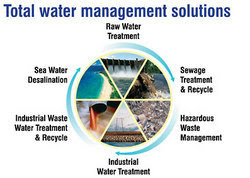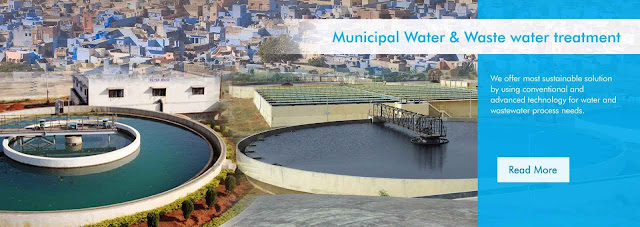The Unseen Wastes of Wastewater Treatment Plants
The potential for slips, excursions, and falls exists in
wastewater treatment plants and those fundamental perils turn out to be more
intense when unsafe gases noticeable all around all through such an office
hasten them. The likelihood of extreme injury or notwithstanding suffocating
from falling into a restricted space, for example, a wet well, distribution
pit, or a clarifier tank, implies the hazard related with working in a
wastewater treatment plant may by higher than we perceive or care to concede.
The primary gases of worry in wastewater treatment plants
are methane, hydrogen sulfide, and oxygen (or the scarcity in that
department). Hydrogen sulfide and methane are the side-effects of the decay of
natural materials that exist in the waste streams sustaining the plant. The
development of these gases may prompt the absence of oxygen, or sometimes,
blast, when combined with a wellspring of start.
Be that as it may, the quantity of gas dangers present might
be excessively various, making it impossible to name. Past the enormous three
gas perils are the threats that exist from refining chemicals, for example,
smelling salts, chlorine, chlorine dioxide or ozone that are utilized as a part
of the purification of the waste and effluent water. Potential for a boundless
number of poisonous or hazardous gases exists from the chemicals that might be
spilled or dumped into the waste framework from the modern base in the group.
Disposal of these gas perils is basically outlandish, so
changeless laborers and contractual workers must rely upon dependable gas
discovery gear to secure them. In spite of the fact that there isn't one
"silver slug" gas screen that will secure each laborer in each
circumstance, an essential multi-gas screen is a decent place to begin. A
standard four-gas screen furnished with the best possible sensors gives security
from the essential methane, hydrogen sulfide, and oxygen perils. The fourth
gas sensor, more often than not carbon monoxide, can regularly be supplanted
with an alkali or chlorine sensor to include security against one of the more
predominant compound risks. Updating from a four-gas to a five, or even six-gas
screen, may enable you to propel the level of recognition and shield yourself
from significantly a greater amount of the potential compound perils.
Sadly, shielding specialists from the perils of gas dangers
isn't as simple as essentially giving them a gas indicator and sending them out
the entryway. In the event that laborers don't utilize their screens
legitimately, don't see how their screens work, or don't know how to respond to
the readings, gas identification gadgets won't be extremely viable.
To begin with, the screen must be turned on. Specialists
must know how to turn the screen on and confirm that the instrument they are
conveying is equipped for recognizing the majority of the dangers that they may
experience. Next, if laborers need to guarantee they are secured, they should
guarantee that the screen will really recognize the gases it should identify. The
straightforward truth is that the best way to be sure that a gas finder will
really identify the gases that it should distinguish is to test it with gas. It
might seem like a confounded method, however it is as straightforward as
setting the screen on a test stand or docking station outfitted with the
suitable gases and having the trial consequently. This ought to be done every
single time the screen is utilized.
The more perils that a screen is proposed to secure against,
the all the more understanding there must be of how the sensors in the screen
communicate. For example, a client with a screen having both hydrogen sulfide and
chlorine sensors introduced must comprehend that the nearness of H2S in the
climate may contrarily influence the perusing from the chlorine sensor and veil
the nearness of an unsafe level of chlorine gas in the air. Clients should
allude to the instrument makers for data on the cross obstruction levels and cooperation’s
between sensors.
As much as understanding the sensors themselves, the
specialist needs to comprehend what the correct reaction is the point at which
the screen detects gas and go into alert. Frequently, when a gas indicator
cautions, an untrained client may freeze and accomplish something that makes a
further risk, or they may basically overlook the circumstance since they don't
comprehend what to do next. Some new screens today give alert activity messages
that show content guidelines directing specialists toward the fitting
activities when the screen cautions. Advising specialists to "WEAR A
RESPIRATOR" or "Clear" when their instruments alerts will
strengthen the risk preparing he had beforehand.
Sensibly, there might be examples when the screen is
basically not equipped for giving the vital assurance rapidly enough and a laborer
might be overwhelmed by a gas risk or debilitated in some other way. It is
critical that the screen a specialist conveys has the way to tell others that
the laborer is in threat. Instruments might be outfitted with a frenzy catch
that gives the laborer a chance to flag others when he need assistance or a
movement distinguishing or "man down" caution that sounds when a
specialist is still. Further developed instruments may have the ability of
activating alerts on other laborers’ instruments when one specialist's
instrument goes into caution. These highlights may all be vital to finding and
safeguarding a casualty of introduction before it's past the point of no
return.
Gas perils are an inconspicuous and unavoidable reality in
the activities of a wastewater treatment plant. In the event that you are
contracted to work at or extremely close to one of these offices, having the
correct gas location hardware and utilizing it legitimately is the most ideal
approach to guarantee that you return home securely toward the finish of the
workday, notwithstanding when the breeze blows the correct way.




This article is so informative and helpful. Thank you for sharing!
ReplyDeletesewage pumps
raw water pumps
Useful Information! Thank you for sharing the post, helpful for me.
ReplyDeleteVikas Pollution is leading one of the best manufacturer of Sewage Treatment Plant in Saharanpur, Uttar Pradesh.
Sewage Treatment Plant For School
Sewage Treatment Plant For Hospital
Sewage Treatment Plant For Mall
Sewage Treatment Plant For Building
Package Drinking Water Plant
Sewage Treatment Plant For Office
Sewage Treatment Plant For Dyeing Plant
Containerised Sewage Treatment Plant
Industrial Sewage Treatment Plant
At Swjal Process Pvt. Ltd., we recognize that wastewater treatment plants play a vital role in protecting the environment and public health. However, it is equally important to address the often-overlooked byproducts and hidden inefficiencies. A balanced approach, combining innovation and sustainability, is essential for advancing wastewater management responsibly.
ReplyDeleteHigh Purity Water Storage and Distribution for Pharmaceutical Industry